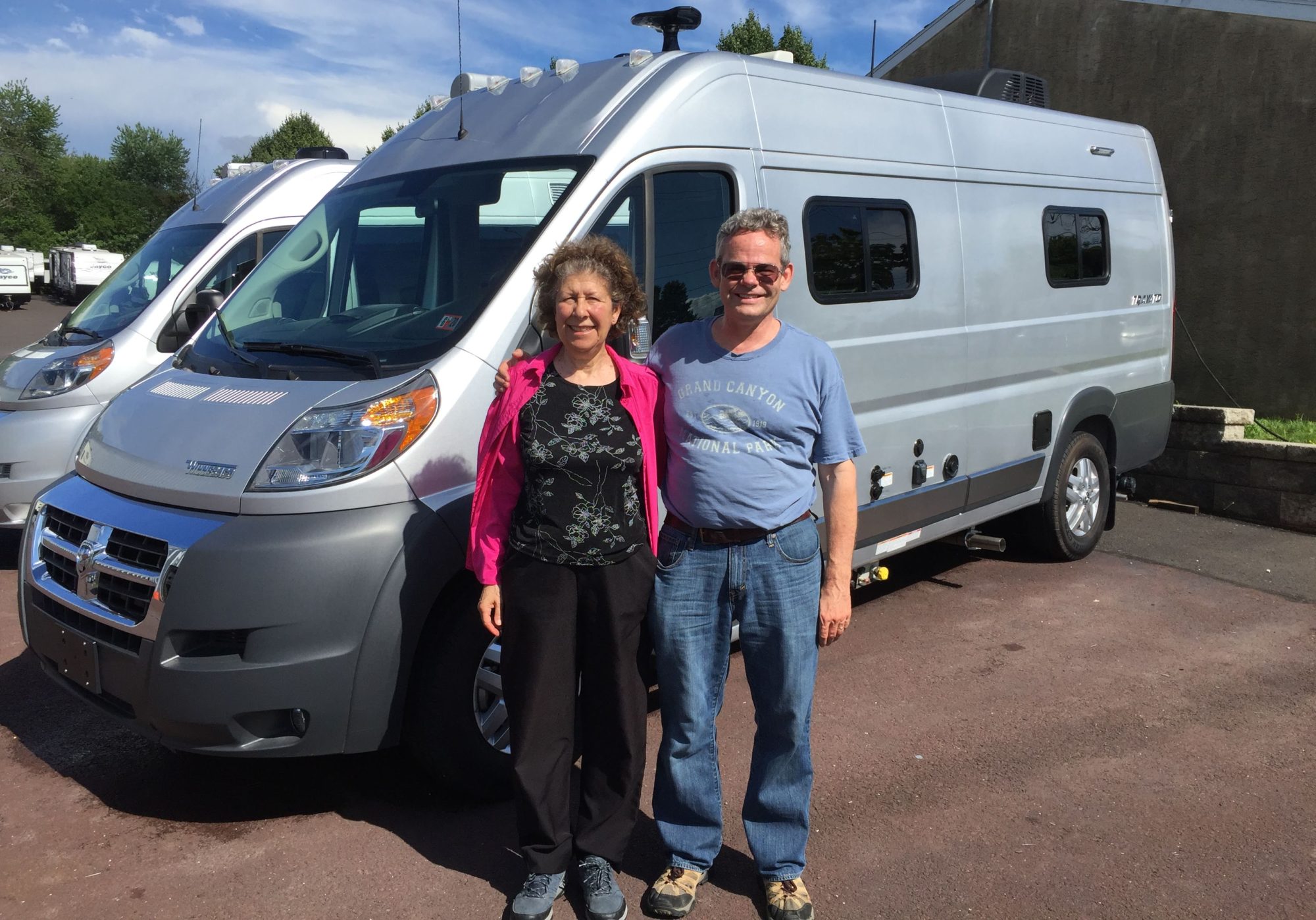With temperature forecasts for the Kansas City to Denver route in the high 90s and low 100s all week, we decided to head for the hills. We are not going to be doing much hiking, biking or kayaking in this weather. However, we are stopping en route when things are sufficiently interesting.
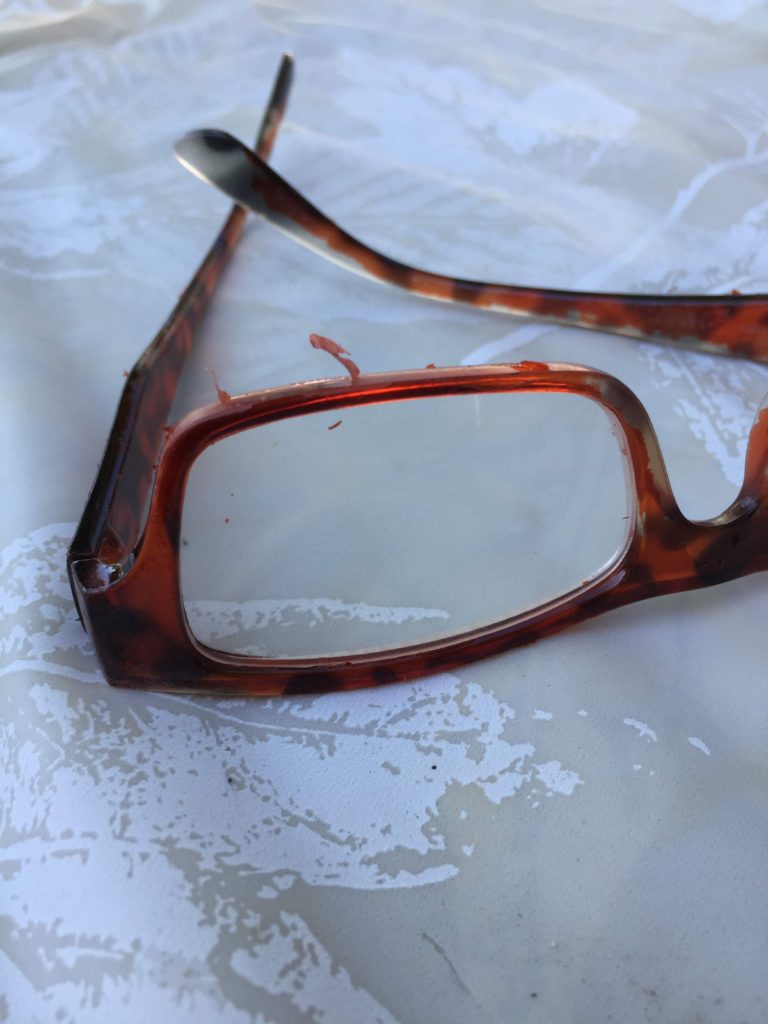
How hot is it? For years I have been buying reading glasses at the Dollar Store. I have never had an issue with the frames. Now the tortoise shell design is literally peeling off the frames. (OK, I know most of the US has been suffering the same heat wave.) We are certainly going to take advantage of our mobility to get away from the heat.
Fort Leavenworth is just beyond the Kansas border. We decided to go have a look at the Frontier Army Museum. It turns out that this museum and other tourist attractions are actually on the army base, which is possibly best known for its military prison. In any case, to see the museum, we had to check in at the Visitor Center. It seemed a bit intimidating, but we were already there, so we proceeded. One thing of note: you need special permission to visit the base if you are not a US citizen.
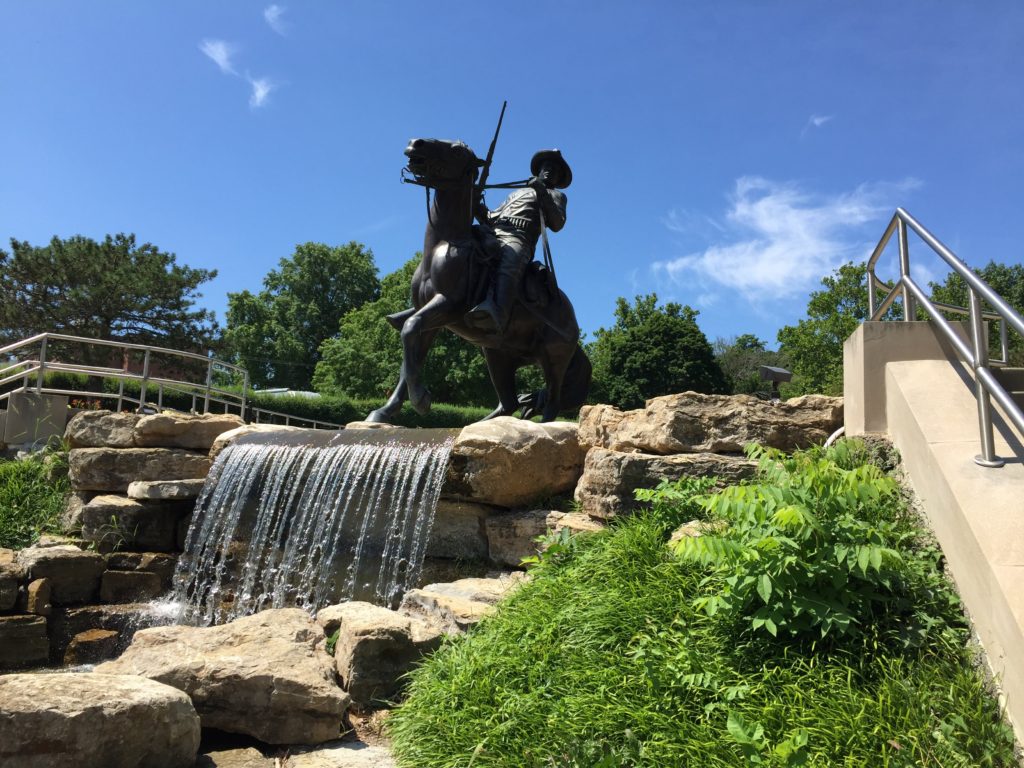
We stopped first at the Buffalo Soldier Monument, which is part of a memorial to African Americans in the US army, starting with the Buffalo Soldiers in the the Civil War. I was aware of their role, but not the role of an African-American WAC unit in WW2. I was surprised to learn that there was no monument to African American soldiers at Fort Leavenworth, where the first African American troups were initially trained, until this monument was dedicated by Colin Powell in 1992.
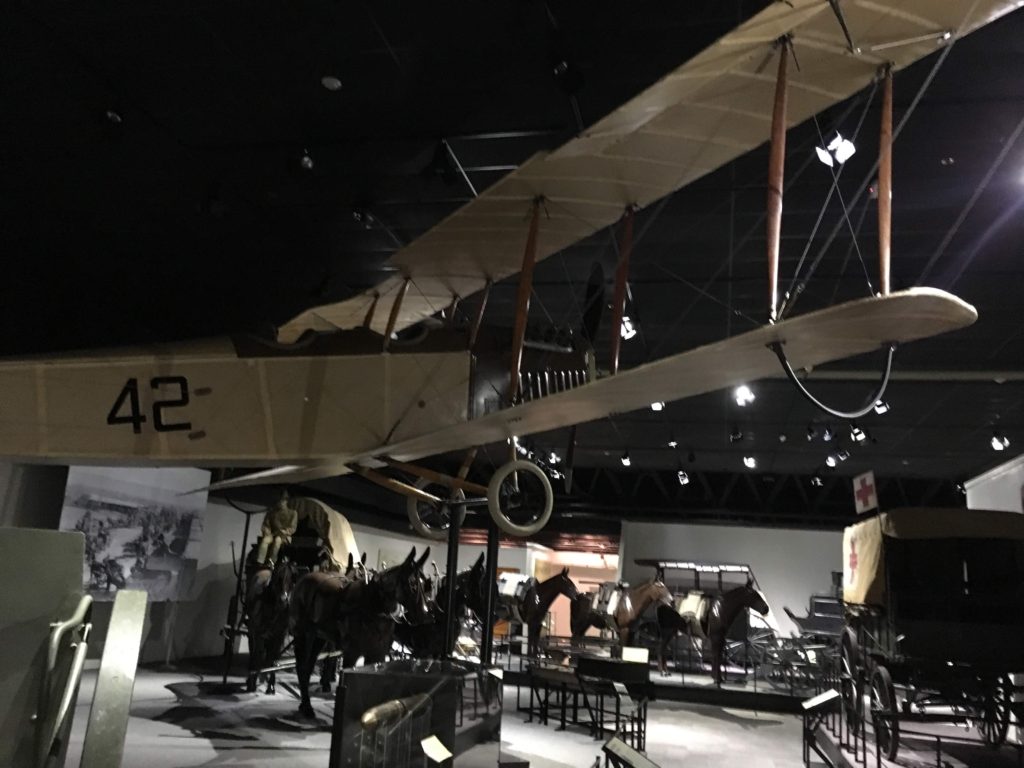
We then visited the Frontier Army Museum, which is quite large. Fort Leavenworth was the first army fort west of the Mississippi and was built in 1827. One thing that struck me going through the museum is how recently the west was settled. Displacement and murder of Native Americans continued right through the end of the 1800’s. (I am not talking about later attempts to separate native peoples from their culture.) The US/Mexico border was not fully established until 1884, and even then, shifts in the course of the Rio Grande changed the border. Since this is an Army Museum, there was a lot of discussion of the various wars over the western territories. Another interesting aspect of the museum is a large collection of army and settler vehicles, from the requisite Connestoga wagon to buggies and sleds used by the officers, supply wagons, ambulances, fire trucks, etc. There was also a display of the evolution of the musket firing mechanism. All in all, this museum probably needs about 8 hours to be fully appreciated. We consider ourselves “museumed out” after about 2 hours. The town also has a carousel museum which would interest me, but there is only so much we can handle in a day.
We camped for the night in a tiny campground that is literally on the ramp to I70. It was easy to leave in the morning. It is hard for me to understand the economics of a place this small (24 sites), as they still need staff.
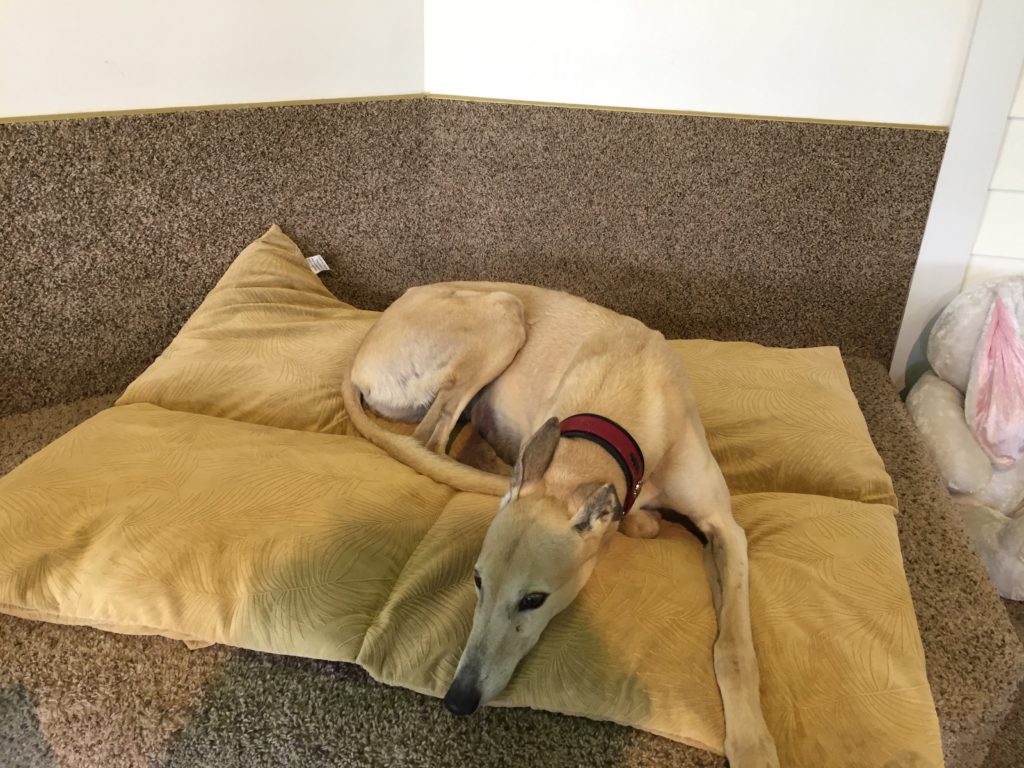
It turned out we were only a few miles from Abilene, home of the Eisenhower Library and Museum. We decided that we have had enough of historical museums for awhile. However, the Greyhound (Dog) Hall of Fame was right across the road and we took a look. We were quite astonished to learn that greyhound racing is one of the most popular spectator sports in the US, and also that its origins are very recent.
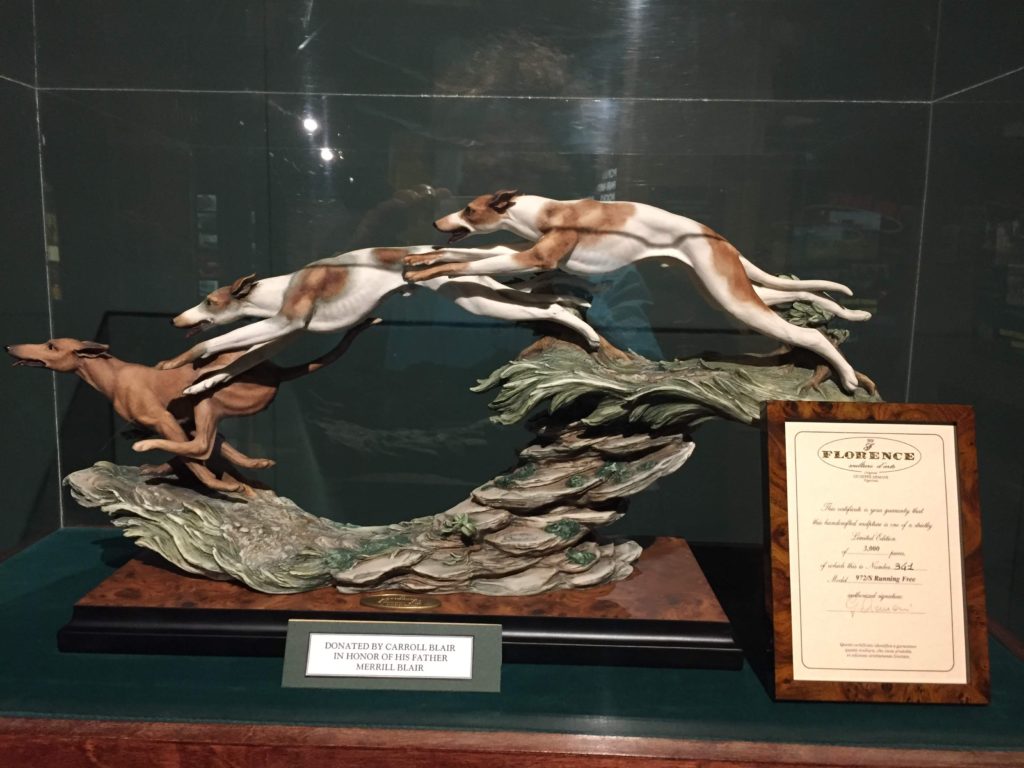
The dogs are at their best for racing between 18 months and 4 years, which explains the large effort to find adoptive homes for retired racers. The history of the breed and of the sport were quite interesting. However, I could not help but feel that raising dogs in this industrialized way is akin to the “puppy milll”. The young dogs get a lot of attention to their physical health, growth and training. But they do not have a lot of human attention and socialization.
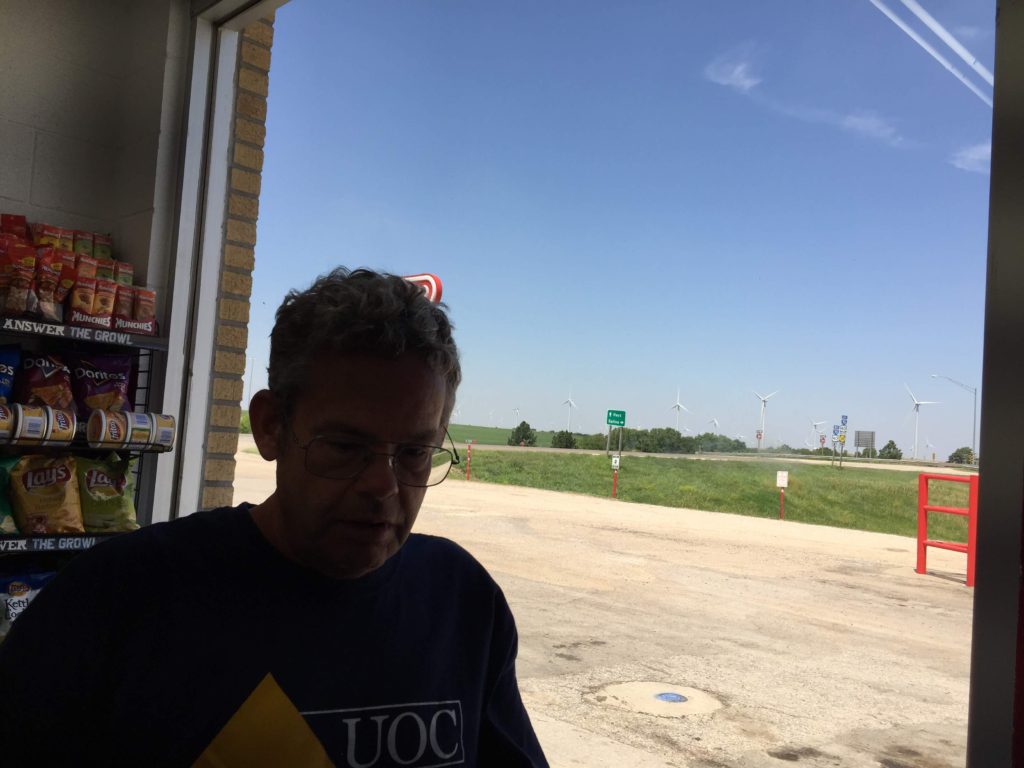
It was a bit early for lunch when we were done, so we continued on our way. Kansas has large stretches of farm and fracking country, with few towns. We ended up getting sandwiches at what appeared to be an isolated gas station. However, there was a constant stream of customers.
In this part of the state, the country is rolling but monotonous. There is lots of scrubland, with clusters of cattle — most close to or wallowing in small ponds. (Did I mention that it is extremely hot?) There are some fields of soy and wind turbines. We are seeing a lot of fracking pumps scattered in fields that are otherwise devoted to cattle or soy.
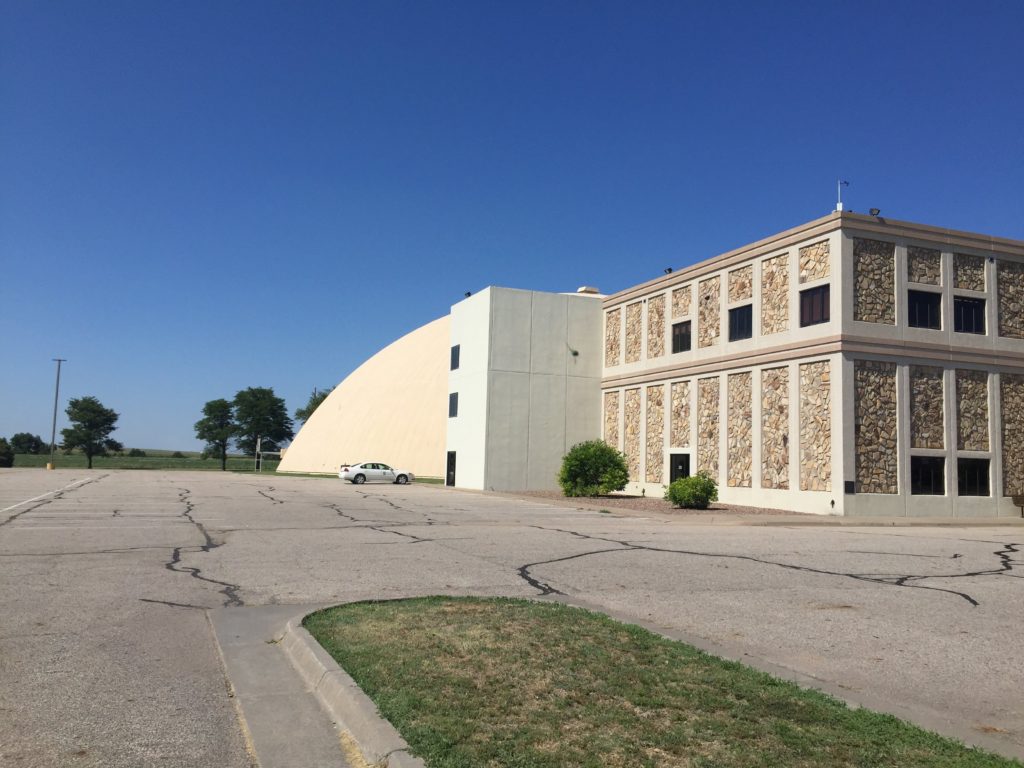
We decided to stop in Hays to see the Sternberg Museum of Natural History. This museum appears to be affiliated with the Fort Hays State University, the third largest state university in Kansas (and another university we have never heard of). It is a terrific museum.
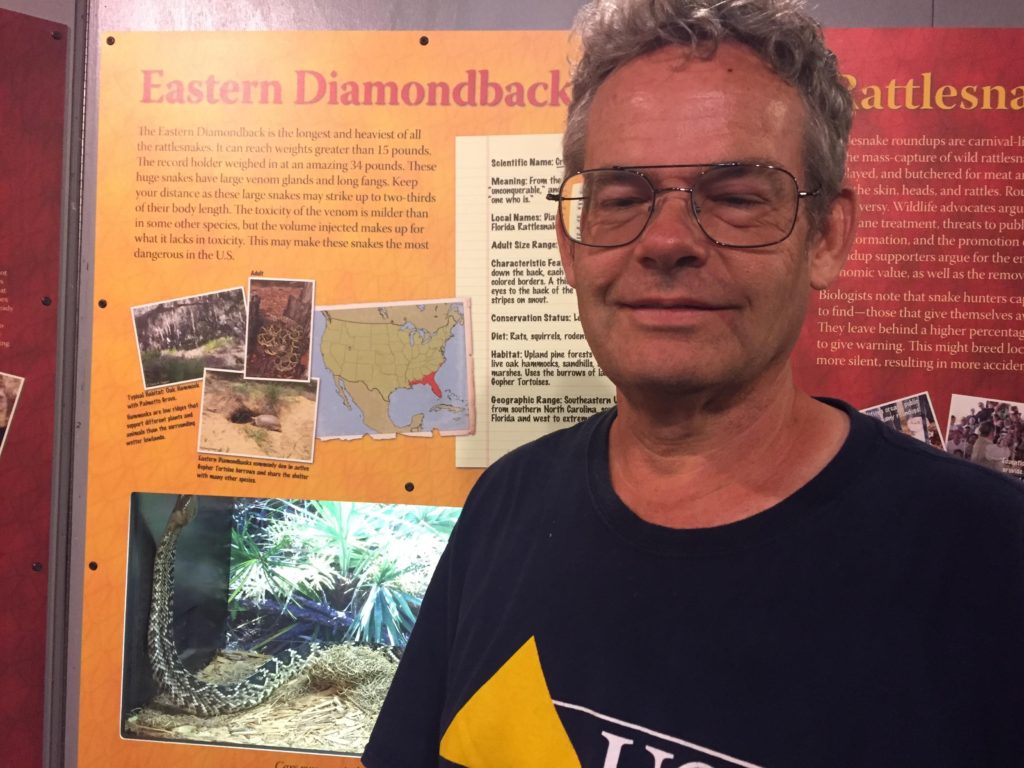
It is mostly devoted to fossils, but also has a very nice exhibit of live rattlesnakes (in terrariums), a small but well-designed mineralogy section and a large panorama with full-size dinosaur robots. This is another museum that would merit a second visit.
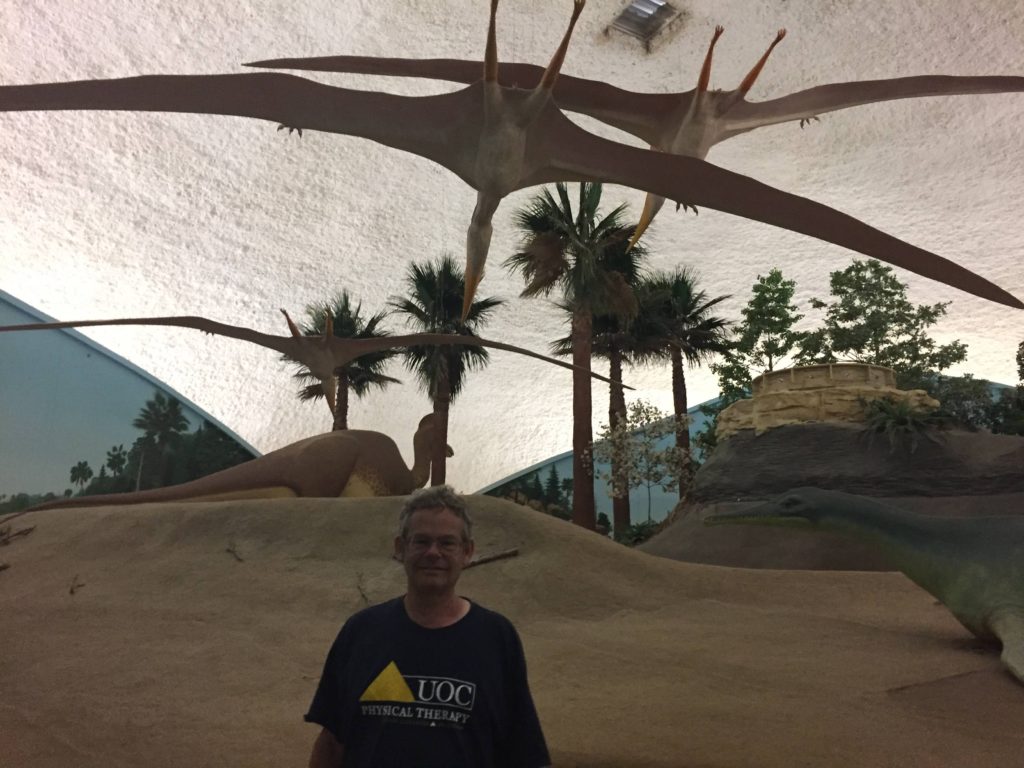
After Hays, we are beginning to see fields that look golden. The wheat harvest is a bit late this year, due to a very wet spring, but according to the internet wheat is being harvested now and there is a good crop. There is also more corn. Although it is very hot, there is plenty of moisture. There are a lot of old-fashioned wind pumps bringing water to the surface, but the creeks and ponds already look very full.
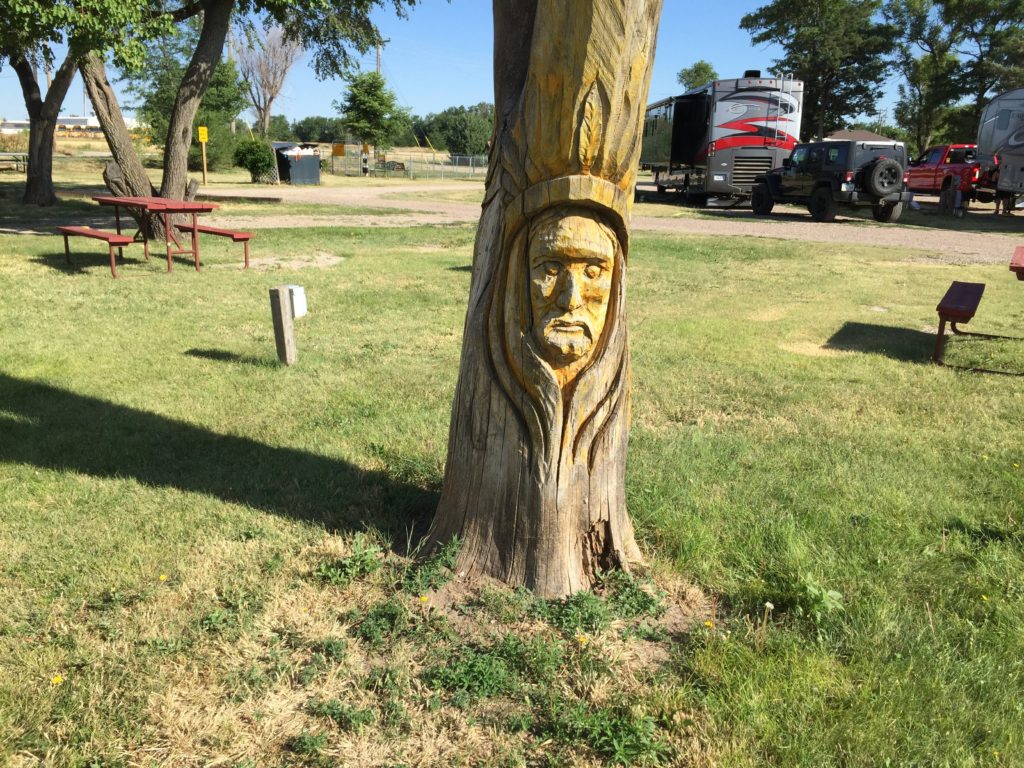
We decided to spend the night at Goodland. Once we arrived, we decided that it is an ideal spot for a rest (despite the heat). Our campsite was tucked in between some trees and a cabin, so we had shade and privacy. The campground has a pool (which Chuck used) and some nice chainsaw carvings done by the previous owner. And it is just half a mile from the town’s main attractions (the world’s “largest easel” and Van Gogh replica and a museum). It put us right on the time zone border which is a bit odd. Our phones were on Central Time, but the town and campground are on Mountain Time.
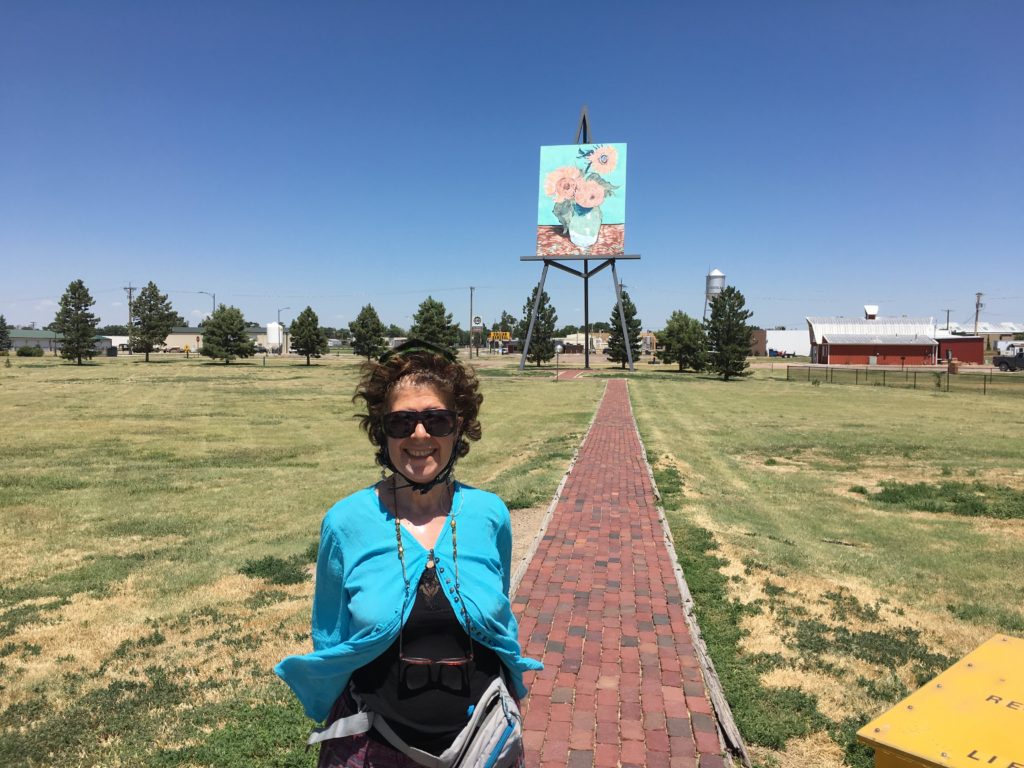
The Van Gogh is one of those bizarre attractions that make this trip endlessly fascinating. Unlike Casey, IL, this was not a local idea. In 1996 a Canadian artist and teacher, Cameron Cross, decided to create a huge copy of a Van Gogh sunflower in Altona, Manitoba, “the sunflower capital of Canada”. Since then, he has done 2 more – one in Australia and the other in Goodland. Goodland is the heart of the sunflower industry in Kansas, the Sunflower State, so having the painting here makes sense. With wall murals so popular these days, it is not even close to being the world’s largest painting, but the “canvas” mounted on the easel is a different experience.
On Monday, we enjoyed our campsite until the heat became too intense. We then biked over to the Van Gogh and the High Plains Museum. The museum is a work in progress. It has a lot of farm and household equipment that is not labelled, for example. However, it also had a lot of unique artifacts such as different types of stoves (coal, gasoline and kerosene) a very ornate furnace and, the oddest of all, an early helicopter.
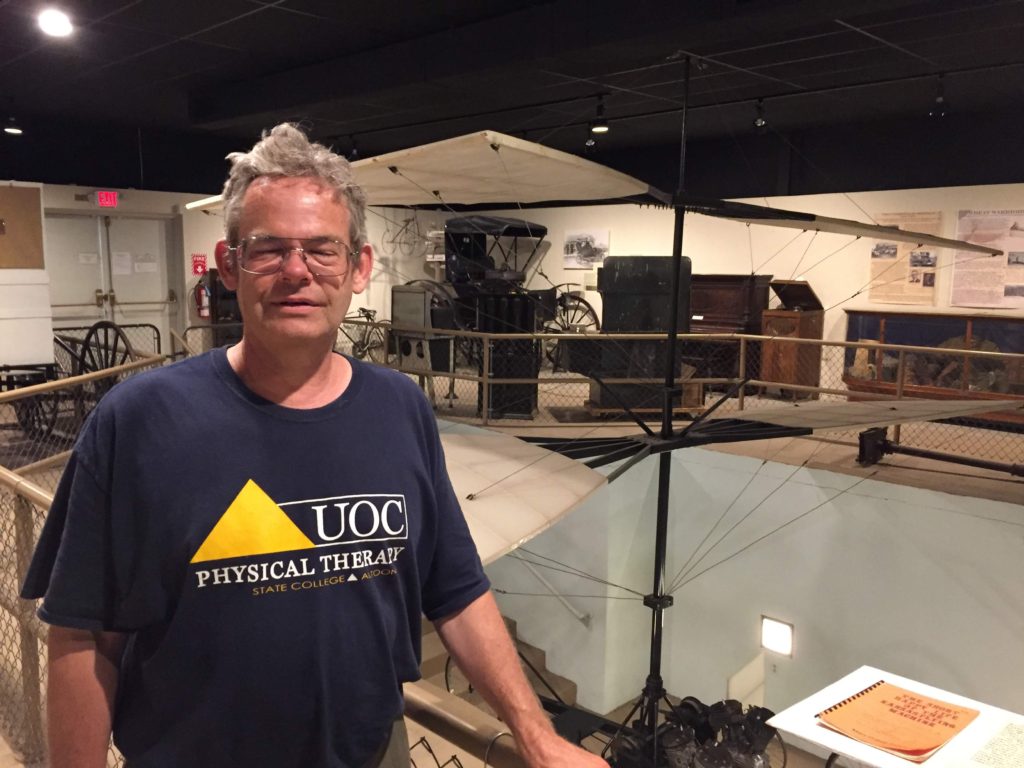
The helicopter is a very odd story. A local mechanic became obsessed with manned flight. Upon watching children playing with a whirly-gig, he conceived of an idea for a flying machine. Another friend who was also very mechanical became intrigued and started working with him. Neither of them were aware of prior attempts (e.g. de Vinci) to utilize this principle. Some time into the project, many of the workers in the local machine shop (Goodland was a center of railroad repairs for the Rock Island Line of folksong legend) became interested and began to assist with making parts. Finally they had a model they thought would work, but at 400 pounds, it needed a substantial motor (actually 2 motors). They convinced the locals to buy shares in a company to develop the machine, and in time announced a working prototype.
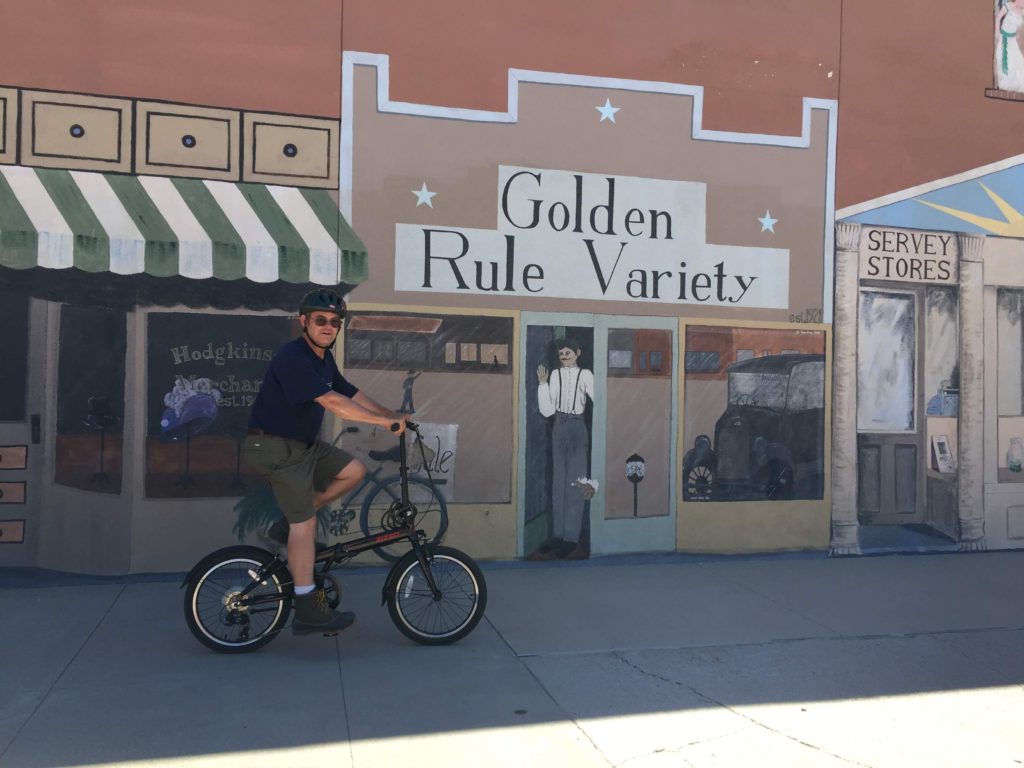
However, they did not deal with the trickiest part of helicopter design – flight control – although they did realize that the body of the plane would end up rotating around the rotor. There are various accounts about the demise of the helicopter. Whatever the case, the inventors were unsuccessful in attracting further investment and eventually gave up on the effort – not before filing the first US patent for a helicopter.
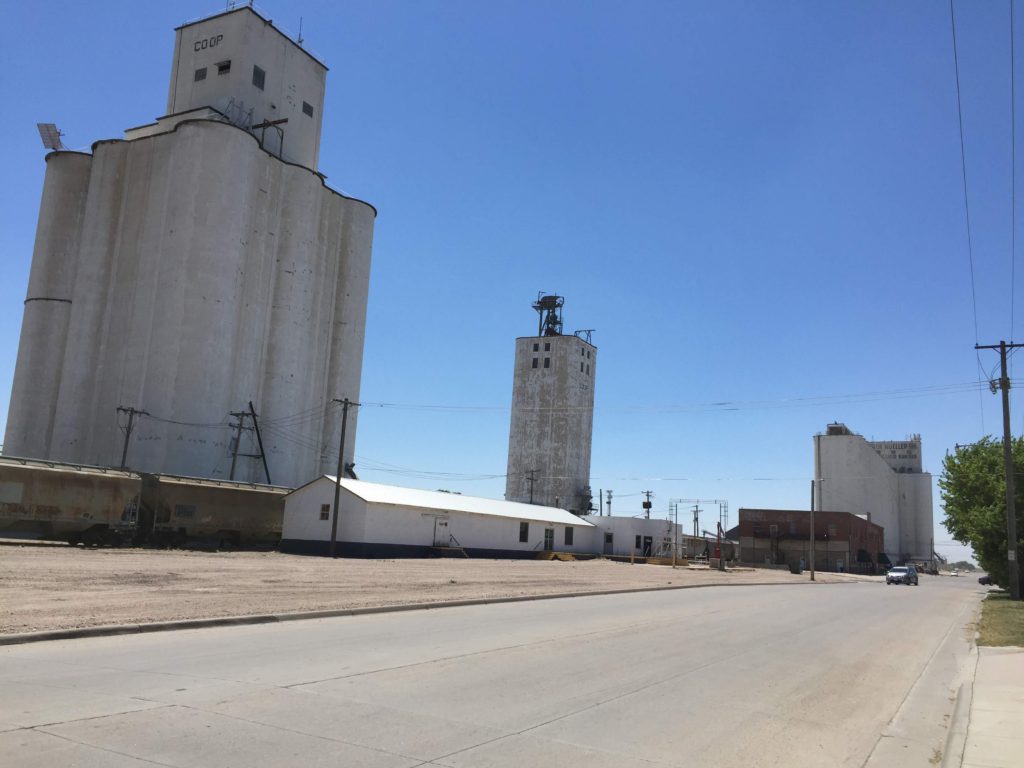
We continued into town by bicycle, past the railroad tracks and grain elevators. There was not much activity. The main street is paved with brick, which is rather tough on the bicycles, especially as some were not in good repair. The town is laid out on a very strict grid, so we returned to the campsite via residential streets.
